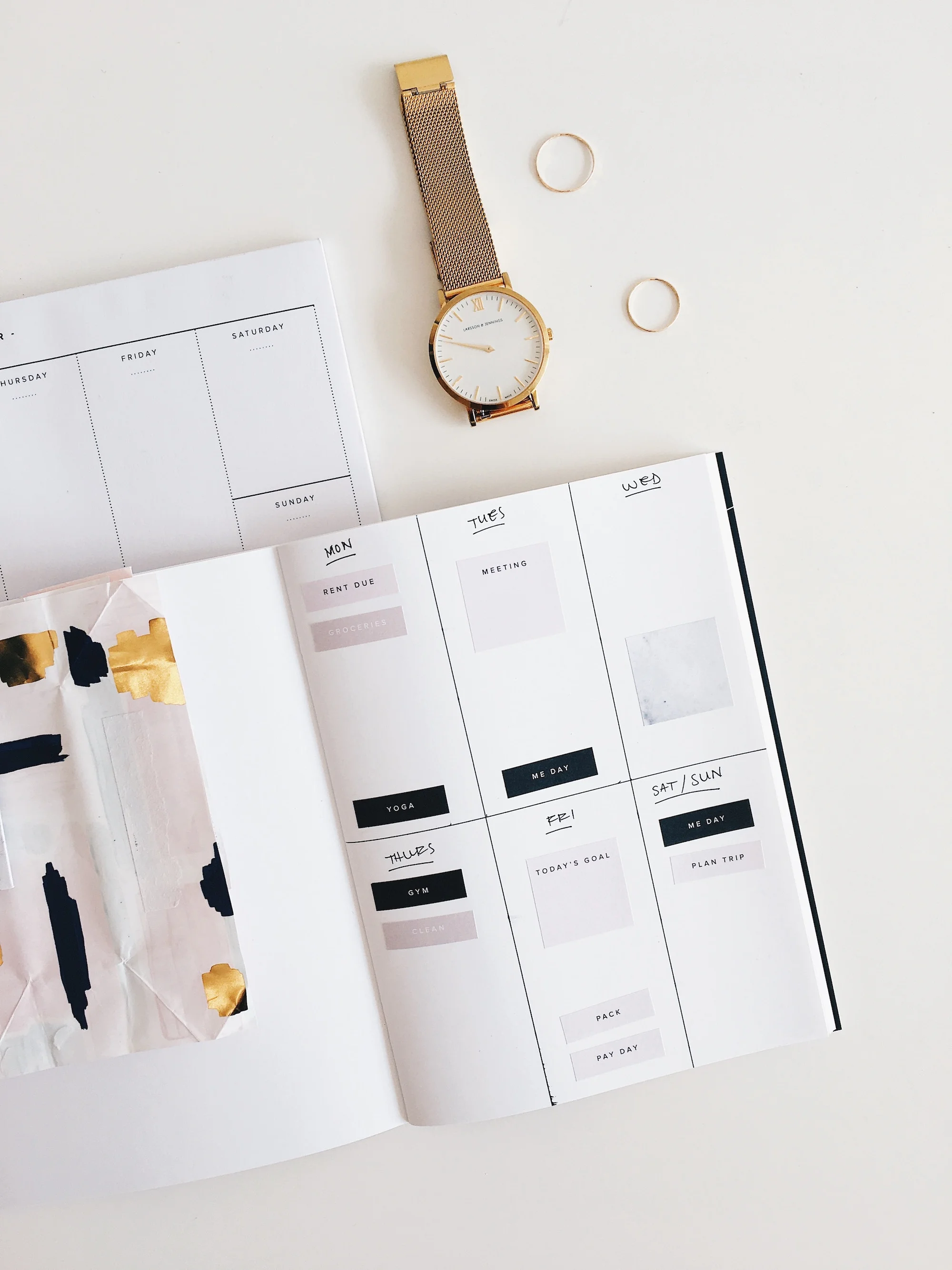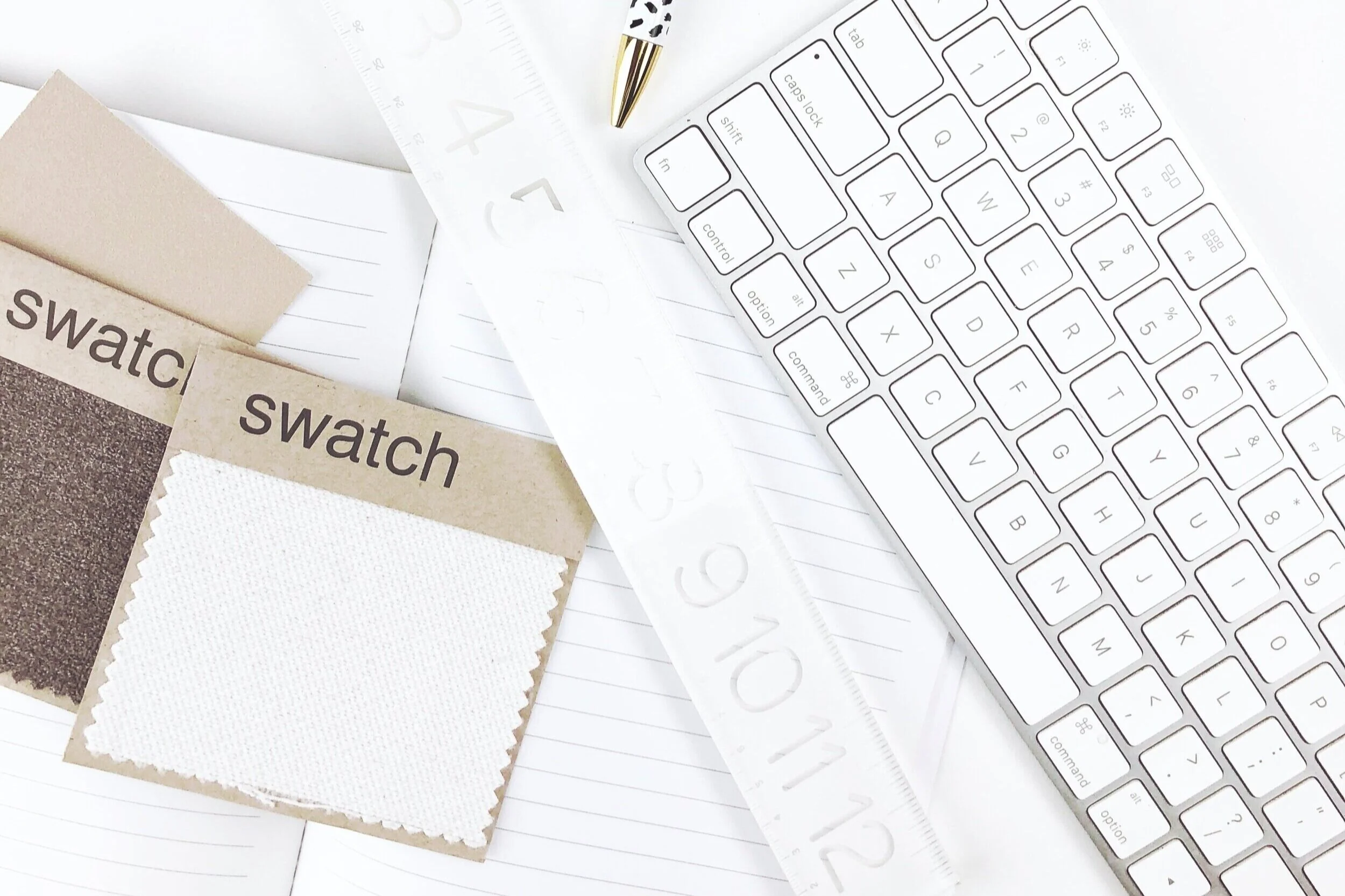5 Things You Should Be Customizing on Your Squarespace Website
The beauty of Squarespace as a website platform (and why it’s my favorite for small business owners and entrepreneurs!) is how easy it is to design your own website. Their beautiful templates can be almost ready-to-go for many purposes.
But, even if your dream website does not require significant customization from its base template, there are still a few things you should customize on your Squarespace website, for branding, professionalism, legal and SEO purposes.
Here are five things I recommend everyone should update on your Squarespace website:
What to customize on your Squarespace website:
Favicon
A favicon is the small icon that appears in your browser, specific to your website. In the screenshot below you can see the favicons for Google, Facebook and Five Design Co.:
Favicons also show up in your browser’s bookmarks bar, browsing history and other places across the web (and, Google recently announced they’ll begin showing up in search engine results too).
Customizing your favicon adds to the professionalism and branding of your website, as well as helps visitors to recognize the site in a list of bookmarked pages or a window of many open tabs.
If you don’t upload a custom favicon, your site will use a default icon—for example, sites built on Squarespace will use this default cube icon:
(Recognize it? It’s floating around on many Squarespace-powered websites whose owner did not customize it. 😁)
To customize your favicon, you’ll need to create a 32x32 pixel image (Canva is a great free design tool you can use for this) and upload it to your website’s favicon settings. In Squarespace, this is found under Design > Logo & Title > Browser Icon (Favicon).
Just keep in mind your favicon will need to be simple enough to be legible at such a small scale—typically a simple icon or one letter does the trick.
Here are step-by-step instructions to create + add a favicon to your Squarespace website.
Footer
There are a few things you’ll probably want to change from your Squarespace template’s default footer:
Remove “Built on Squarespace”: This is a default setting on Squarespace templates, and while there’s nothing wrong with it per se, removing Squarespace’s templated branding adds to the professionalism your site, and helps focus on your business’ branding.
Add copyright: Protect the intellectual property and content on your website by adding the copyright symbol ©, the year your site was updated (generally the current year) and your business name. (Helpful tip: © is option + G on a Mac. 😇)
Add a Privacy Policy & Website Terms: There are few legal policies you’ll likely want to include on your website. If you collect any personal information on your website (such as email addresses on your opt-in form), you’ll need to have a privacy policy posted in a visible location (I suggest the footer), letting your website visitors know how you collect and use their information.
💸 Use code PARTNER10 for 10% off Squarespace
This post contains affiliate links through which I may earn a commission if you choose to purchase, at no additional cost to you. As always, these are products or services I personally use & love!
Blog post URL format
In Squarespace, blog post URLs are sometimes set up to reference the date they’re published + the title. So, this post would look something like:
fivedesign.co/blog/2019/6/24/5-things-you-should-be-customizing-on-your-squarespace-website
That’s a lot of numbers, though!
And, there are several reasons you might not want to include the publication date in your blog post URLs:
If your post is intended to be “evergreen” (always relevant) content, this unnecessarily dates it, eventually making it appear less fresh.
If you intend to continue updating your post with new information as needed, this date becomes inaccurate.
The extra numbers lengthen and clutter the URL, making it less user-friendly, as well as less SEO-friendly.
So, instead, you can customize how Squarespace formats your blog post source URLs. Find this under Settings > Blogging > Post URL Format.
Here you can see we just use the post title and it’s cleaner and simpler:
fivedesign.co/blog/5-things-you-should-be-customizing-on-your-squarespace-website
One note about using numbered lists in your blog post URLs: If you ever want to come back to your list and update it (maybe add some more items to the list) and at that point your title changes to “10 Things You Should Be Customizing on Your Squarespace Website,” then the original URL no longer matches.
I don’t mind that here because I’m not going to update the list (like to do things in sets of five 😉), so I’m fine keeping the 5 in the URL. But, if you did want to plan for possible future updates, you could simply adjust your post URL to /things-you-should-be-customizing-on-your-squarespace-website—without including the number it will remain relevant no matter how many “things” are eventually added to the list.
Social Sharing Logo(s)
Your website’s Social Sharing Logo is the image that will be used on social networks (like Facebook) when you share a URL from your site. (However, note that collection items like blog posts and products use their own thumbnail images, not the Social Sharing Logo).
Upload a custom Social Sharing Logo under Design > Logo & Title > Social Sharing Logo.
For example, this is Five Design Co.’s Social Sharing Logo and how it appears when our homepage is shared on Facebook or other social platforms:
If desired, you can also add an Alternate Social Sharing Image to specific pages (Page Settings > Social).
SEO Descriptions
I recommend adding SEO page descriptions to every page of your website!
These descriptions (found under Page Settings > SEO > SEO Description) are used by search engines to inform visitors what your page is about. They’re also visible in your search listing, informing visitors what they can find if they click on your page.
A few tips as you’re adding your SEO descriptions:
Be descriptive yet concise—aim for 50-300 characters.
Include plenty of relevant keywords.
You can also customize your SEO Title (perhaps you’d like a page’s title to be a bit longer or more keyword-rich in search engines than you’d like in your navigation bar).
Your homepage is governed by the SEO Site Description, found under Marketing > SEO > SEO Site Description.
If you don’t customize your SEO descriptions, search engines will use your page description or other relevant content they may find on your page. However, providing search engines a thoughtfully crafted SEO description is your best bet for helping them accurately understand (and rank!) the content of your webpages.
You can always check how your pages will appear in search engine listings under Page Settings > SEO:
And, if you’re interested, here are more tips on improving SEO for your Squarespace website.
Want to create a beautiful, functional & professional website to grow your business?
Get my free checklist for optimizing your Squarespace website:
















